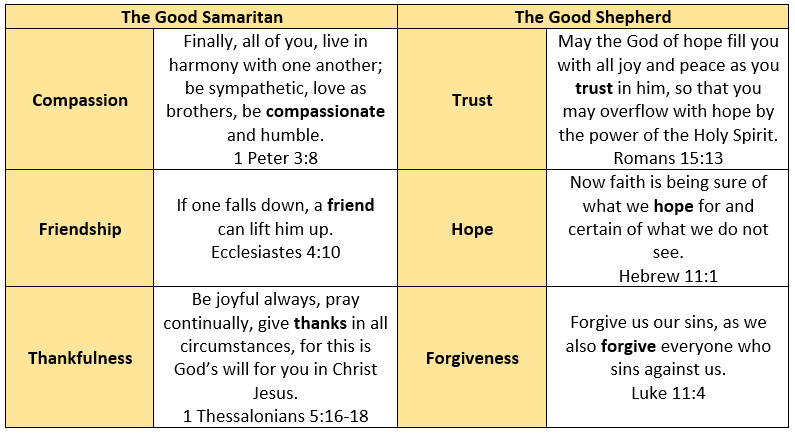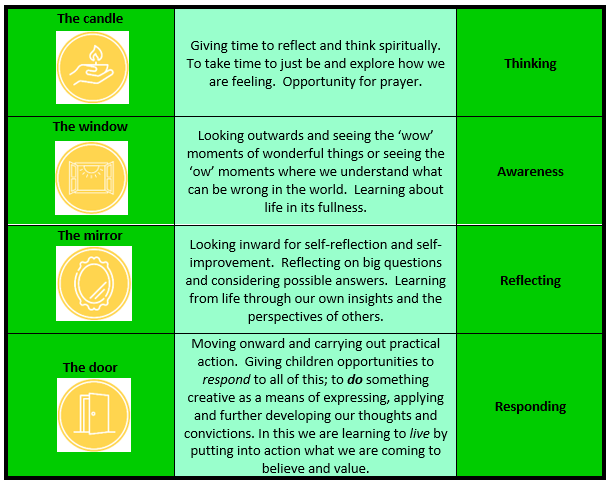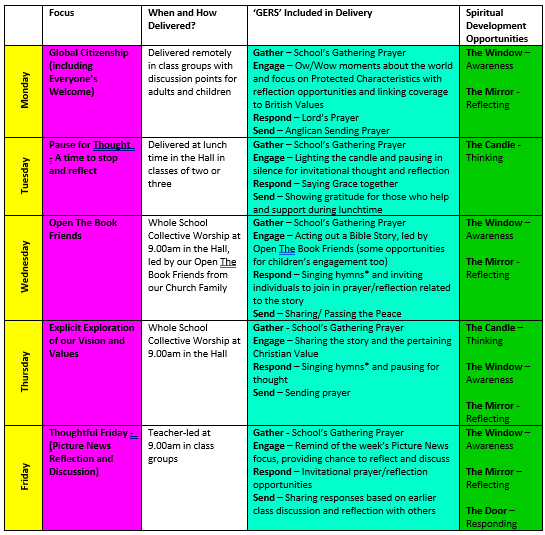Commitment 2


Who are we?
We are a Church of England School who were voluntary controlled prior to converting to a Stand Alone Academy Trust in 2012. As such, we have a Board of Trustees who operate as a local governing body but we are investigating church MATs with the potential of joining. We are a medium sized Junior school where the majority of children transfer from a non-church maintained infant school on the other side of the village, and as we are not joined in any way, this means that we are unable to control the quality of education in KS1. It is an average sized two-form entry school, maintaining a number of around 240 children in 8 classes.
The children who attend our school are from very diverse economic backgrounds with very varying need. This can be seen in the deprivation indices, as our school’s deprivation is categorised as average but the local deprivation indicator shows that our school is in the more deprived of all schools’ quintile. In addition, the pattern is not equally spread throughout the school. Some cohorts have nearly half of the pupils identified as disadvantaged and in others, it can be as small as 10%. However, and increasingly so, families in our community are struggling financially when they are not in receipt of Free School Meals or Pupil Premium Funding.
In contrast, the ethnic backgrounds of our families is not diverse with over 90% being from a white British background. As such, a large proportion of our children fall into the group that statistically make the least amount of academic progress throughout their time at school. In addition, we have a higher than average number of children with Special Educational Needs and, as a whole, our cohorts arrive from KS1 with lower than average outcomes. Our children need support to improve their reading and vocabulary so that they can have access to their learning and understand more. The low aspirations of some families coupled with limited experience of the wider world means that our children need as many opportunities to see what is possible for them in the future.
Historically and even more prevalent now, is the concern that our families are really struggling with their mental health and the impact that this has on our children. There is sometimes a feeling in our community that there is a ‘lack of love’, not because individuals do not love but they do not always know how to do this in a constructive way because of their own personal histories. We need to build our school with love as its foundation so that it encompasses every aspect of everything that we do.
Luckily, we have built strong and trusting relationships with the majority of individuals connected with our school and we need to continue to build on this as much as possible. Our school has been in the community since 1872 and this tradition of providing for all children, no matter their background or beliefs, needs to continue.
To continue to work towards achieving our vision, we need to carry on the strong partnership we have with the Leicester Diocese and take the opportunities to develop our knowledge and understanding as well as support others. We need to ensure that we support others, such as mentoring other church leaders, so that we are able to expand our ‘neighbour reach’. We need to continue to work with Thomas Estley Teaching Alliance and the Leicester and Leicestershire Teaching Hub to both support others and develop as an outwardly facing school. Working with as many schools with different contexts will widen our perspective and prevent ‘group think’. It is important that we maintain our close links with St Mary’s Church and be active on their Parish Church Council so that our school remains in the church community. Our leaders need to ensure that they are part of professional bodies to keep up to date with the latest in best practice, for example, NATRE.
What are we doing here?
Our overall school vision is:
Love thy neighbour in a flourishing school community. A community with Jesus’ protective love at heart, embracing inclusivity and having the highest expectations for all, both academically and behaviourally. A community that nurtures individuals as a whole, their mind, body and spirit. A loving, knowledgeable community building a rich, challenging curriculum for all.
As such, our vision is based on love. A love that welcomes and challenges and wants every individual to flourish holistically. Its main roots are very simple and come straight from Jesus:
A new command I give you: Love one another. As I have loved you, so you must love one another.
John 13.34-35
To enable us to understand this love fully and how it applies to our every day practices, we need to use parables from the Bible to enhance our understanding. The two parables that will help guide our journey are The Good Samaritan and The Good Shepherd. We need everyone connected with our school to understand how the meaning behind both of these stories can help us to become better versions of ourselves.
The parables are connected to our Christian Values so that we can explicitly teach how to show love to our neighbours. The table below shows which values are connected to each parable and the Bible quote adds additional information:

Each value is given a half term’s focus, being explicitly taught within Collective Worship and a Christian Value lesson delivered within all year groups. The teaching of and about these also incorporates examples of how each value can be lived out within and beyond school and children produce artwork conveying their comprehension and reflections.
To really help children to understand these messages about love, we need to ensure that we have a ‘less is more’ approach to how we teach this area. We need to be explicit and make sure that adequate time is given to really embed our key themes.
One key element is how we deliver our Collective Worship.
Collective Worship needs to be carefully planned ensuring that that all acts are inclusive, considering the differing backgrounds, experiences and individual spiritual journeys of our community, invitational without compulsion and finally, inspiring. This requires careful planning, considering the following principles:
- each act of Collective Worship will follow the GERS format (Gather, Engage, Respond, Send)
- each act of Collective Worship will have an opportunity to explore spirituality
- each week in Collective Worship there will be a strong connection to our Vision and Values
- story telling will be at the heart of Collective Worship
Collective Worship is therefore organised in such a way that key ideas are covered each week throughout the year so we have the chance to introduce ideas as well as give individuals the opportunity for practice. The main aim however, will be to focus on our vision and values and how they can be lived out and understand how being spiritual can enhance our lives.
As a school, we focus greatly on the holistic development of individuals within our community: mind, body and spirit. Working towards spiritual wellness for everyone is something we feel key but we recognised the complexities of defining and understanding spirituality. We spent a lot of time researching and reflecting in order to come up with our school definition. We define it as:
‘Being connected to something larger than ourselves that changes the way we think, feel and behave.’
Spirituality can be connected to religion but equally it is something we can all share regardless of our personal faith. We see spiritual development as a journey that we are all on and appreciate that we are all at different points in this journey.
As a school we feel we can best support spiritual development by offering provision in four ways:

Each act of worship offers one or more of these provisions, ensuring that all four ways of developing spirituality are covered weekly.
Recognising that Collective Worship offers a daily invitational opportunity for spiritual development, a rolling weekly organisation of these opportunities, in addition to thinking about the elements of Anglican worship and practice we wish to include, has been planned and informs of our weekly Collective Worship rota. As individuals’ spirituality develops differently, we feel strongly that each week should provide opportunities for all to engage with the written word, be it through reading text, sharing stories of facts; provide symbols via a candle, liturgical cloth, Bible, or cross; involve action which may invite individuals to do something during or after the session and present opportunities for recognition and sharing of emotion through shared song or talk. Collating all this together has resulted in the following schedule:

N.B. At differing times of the year, we will welcome visitors into school to deliver Collective Worship so coverage and organisation may differ to the above. Reverend Philip from our linked Parish Church regularly attends to mark Feast Days and key events within the Christian Calendar.
Wherever prayer is offered, this is invitational without compulsion and should always be accompanied by the option to reflect.
*The hymns shared will be dependent upon the time of year, events in the Christian Calendar and which of our two parables demonstrating our vision and respective values are our key focus at the time.
Parents have the statutory right, under Section 71 of the School Standards and Framework Act 1998, to withdraw their children from all or parts of RE lessons and acts of Collective Worship.
Parents are not obliged to give a reason for requesting withdrawal. However, before exercising any right, we would ask that you discuss your concerns with the Headteacher.
Parents who wish to exercise their right to withdraw their child from Religious Education or Collective Worship will need to contact the Headteacher to discuss arrangements for alternative provision.
We ask that requests for withdrawals be made in writing. For example:
As parents of [child's name] we formally request that he/she is withdrawn from RE/Collective Worship in future.'
Our Religious Education needs to have this same strategic forethought so that it is planned in such a way that systemic learning about religions comes before thematic units which draw from a wider perspective. To enable us to do this, we need a clear curriculum setting out what knowledge and skills are taught in each year and how they build on previous learning and prepare children for the next part of their learning. Children need to have a thorough knowledge of Christianity and other World religions and/or World views. The RE Subject Leader needs to support their fellow teachers to have the required subject knowledge, the subject-pedagogy knowledge and clarity around learner progression in their subject.
Being a Standalone Academy Trust enables us to have a certain amount of freedom to forge forward with our vision as we are not constricted by other priorities from other schools. Our curriculum and collective worship can be designed with just us in mind and focus on our needs. It means that decisions can be taken quickly and change, although not rushed, can perhaps happen quicker than if we were part of a Multi-Academy Trust. However, there are many benefits to belonging to a group of likeminded church schools and we need to continue to investigate how our mission could be bolstered by working more with others in a formal way.
In the meantime however, we need to continue to have a strong relationship with Leicester Diocesan Board of Education by subscribing to their education offer and making full use of training and networks that are available. Having an understanding of the DBE’s vision and the Church of England’s vision for education will really support how we enact our own school’s vision. Similarly, the strong links with have with St. Mary’s Church need to be continued and cherished. It is important that the Headteacher and Incumbent continue to have a strong trusting relationship where support is reciprocal. This Governing Body and the Parochial Church Council will both be stronger and more effective where the church and school work together. To ensure that our work as a Church School is as effective as possible, we need to ensure that our Local Governing Board of Trustees understand their role in accountability as a Stand Alone Academy and in particular, our Foundation Governors need to play an active role in guiding us towards fulfilling our mission.
